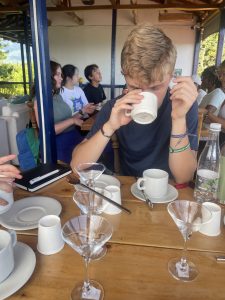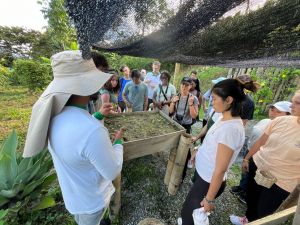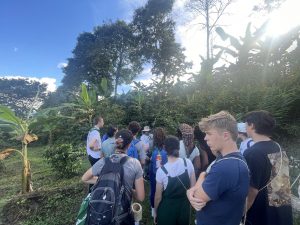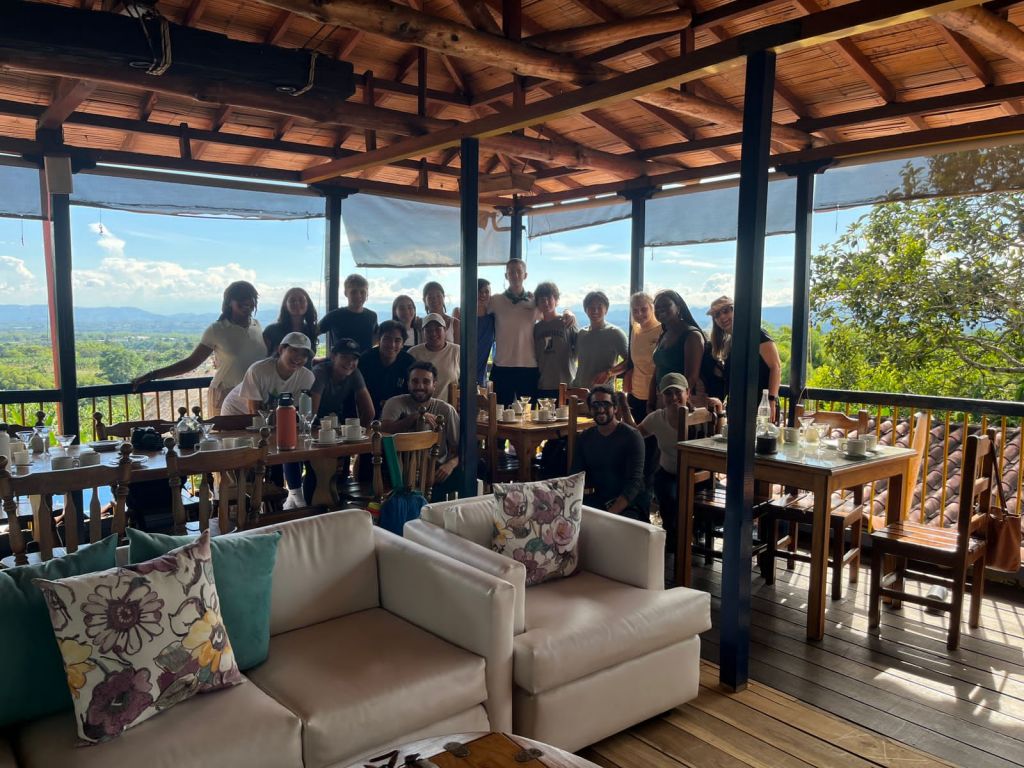Andrew ’25, recounts the groups visit to a coffee farm in Salento, and learns the importance of taking advantage of opportunities.
The word of the day was aprovechar meaning to take advantage of the opportunities granted to us. With that in mind we immersed ourselves into the intricate process of making authentic Colombian café and brought our attention away from the bustle of city life in Bogotá and to the quiet buzz of insects in La Región del Café. The environment change was intense, as we discussed the possibility of our bug spray ruining our aromatic experience overlooking a vista of millions of coffee plants; rather than the vivid colors of Bogotá’s barrios.
After indulging in a traditional Colombian lunch of chicharrón con sopa y frijoles, we began our tour of a granja de café by distinguishing the difference between café bueno y malo. We learned that the best coffee is made without shortcuts and by allowing the coffee beans to dry with their shells and natural sugars, creating a desirable note of caramel. After tasting coffee produced through extensive time and labor rather than industrially, we headed down into the valley.
Coffee starts its gestation in river sand and when the saplings grow to the size of a matchstick and sprout two leaves they are transferred to the earth. A coffee plant has a lifespan of 20 years with a necessary cutback every five years to inhibit the growth of new branches with more coffee pods. Good coffee is handpicked so that only ripe or red pods make it into the roast, rather than the industrial method of shaking the plant. Throughout our tour of la granja we utilized aprovechar by asking our guide questions regarding the integration of coffee plants in an ecosystem and learned that maintaining a variety of plants in the coffee farm benefits the growth of the coffee. We also tried our best to understand the complex Spanish vocabulary and rapid pace of speech from our guide through repetition of information and asking for clarification. Our day concluded with a delicious cena of trucha, or trout, covered in our choice of garlic or kiwi sauce, and of course served with refrescos y tapas.





